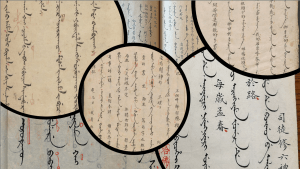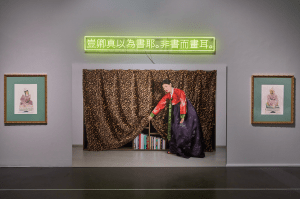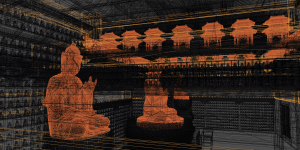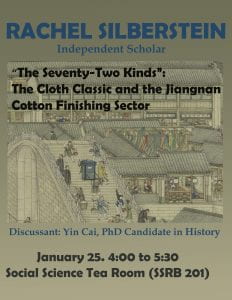We cordially invite you to join us next Friday, Nov 8, at 4:45-6:45pm CT, CWAC 152 for our second VMPEA workshop this fall. This workshop features:
Yuzhe Cao
MAPH 2nd Year, UChicago
Who will be presenting the paper titled:
“The Transcendent Landscape: Xu Daoning’s Fisherman and the Scholar-Official Viewers in the mid-Northern Song Dynasty”
Discussant: Wei-Cheng Lin
Associate Professor of Art History and the College, UChicago
This workshop will take place in hybrid format. For those who would like to join online, please register here.
Please see the abstract and bios for this workshop below.
We hope to see many of you there!

Xu Daoning, Fisherman, handscroll, ink and slight color on silk, 48.26 × 225.4 cm. The Nelson-Atkins Museum of Art.
Abstract:
Xu Daoning 許道寧 (ca. 970-1052), a landscape artist active in the mid-Northern Song era, received considerable respect from both art critics and scholar-officials in his day. Nonetheless, the existing scholarship has often discussed Xu’s works from the perspective of the Li-Guo landscape lineage. Despite this recognition of his connection to Li Cheng 李成 (ca. 919-967), Xu Daoning remains a less studied figure in the history of landscape painting in current works, particularly in comparison to Li and Guo Xi 郭熙 (ca. 1000–1090). However, a close examination of his most celebrated work, Fisherman’s Evening Song 漁舟唱晚圖 (hereafter Fisherman), painted around 1050, reveals that it transcends mere imitation of Li Cheng’s artistic styles. Its unique chronotope reflects the distinct social and cultural milieu of its time.
This paper explores the interplay between Xu Daoning’s Fisherman and its special intended audience in the mid-Northern Song Dynasty, namely the scholar-officials/literati. I argue Fisherman resonates deeply with the cultural landscape of the contemporary scholar-officials. Following a short biography of the artist himself, the paper will analyze three aspects of the painting: the progressively-viewed handscroll, the sacred mountain, and the prominent figures. In the last section, I will examine how the culture of landscape poetry and mental reclusion fostered under the reign of Emperor Renzong 宋仁宗 (r. 1022-1063) might have contributed to the unique illustration of the landscape within Fisherman. Ultimately, this analysis aims to illuminate how the painting reflects the literary and philosophical trends embraced by scholar-officials during the mid-Northern Song era.
Bio:
Yuzhe Cao is a second-year MAPH student at the University of Chicago, studying medieval and pre-modern Chinese art, with a focus on tomb art and landscape paintings. He received his BA in history from the Ohio State University. He is interested in exploring the narrativity across different art mediums and how difference in materiality would affect the selection of various visual motifs.
Wei-Cheng Lin specializes in the history of Chinese art and architecture with a focus on medieval periods. His primary research interests concern issues of visual and material culture in Buddhist art and architecture and China’s funerary practice through history. He is the author of Building a Sacred Mountain: The Buddhist Architecture of China’s Mount Wutai (University of Washington Press, 2014). He has additionally published on a variety of topics, including collecting history, photography and architecture, the historiography of Chinese architectural history, and contemporary Chinese art. Lin is currently working on two book projects: Performative Architecture of China explores architecture’s performative potential through history and the meanings enacted through such architectural performance. Necessarily Incomplete: Fragments of Chinese Artifacts investigates fragments of Chinese artifacts, as well as the cultural practices they solicited and engaged, to locate their agentic power in generating the multivalent significance of those artifacts, otherwise undetectable or overlooked. Lin is also the Faculty Director for the Dispersed Chinese Art Digitalization Project (DCADP), a digital humanities initiative supported by the Cyrus Tang Foundation.








